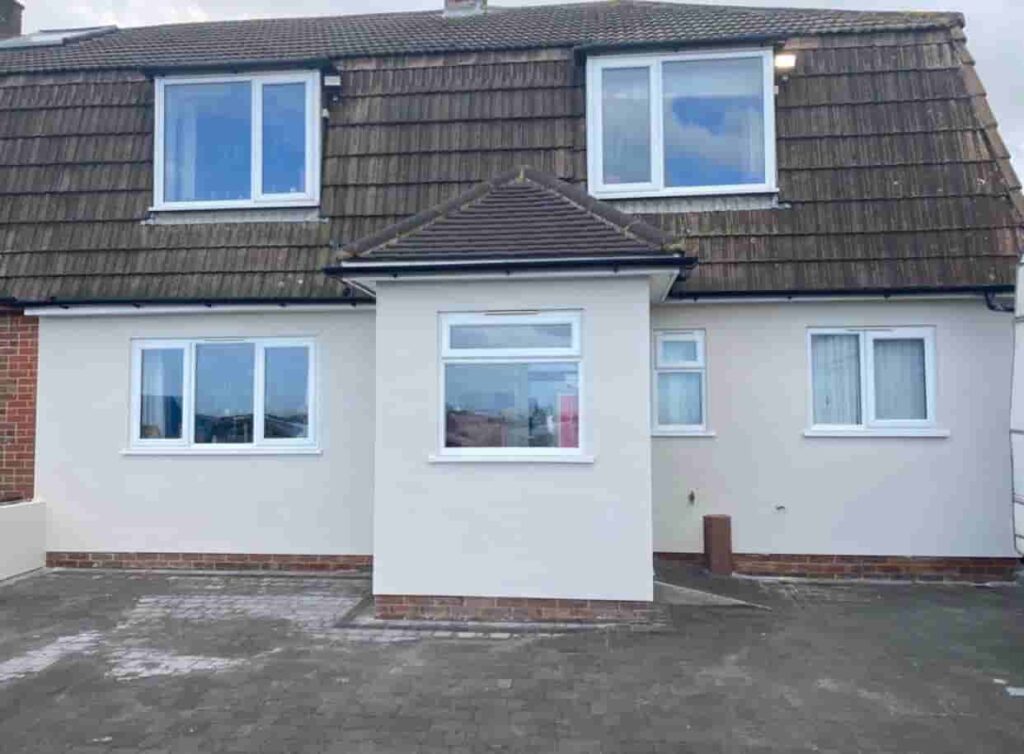Concrete roof tiles are a popular choice for many homeowners due to their durability and cost-effectiveness. However, like all roofing materials, they can become damaged over time due to weather conditions, age, or poor installation. If you’ve noticed a broken concrete roof tile on your property, you may be wondering whether it’s possible to repair it or if a full replacement is necessary. At LJ Roofing Corsham, we specialise in roof repairs and are here to help you understand your options when it comes to broken concrete roof tiles.
In this blog post, we’ll explore whether it’s possible to repair broken concrete roof tiles and the steps involved in making sure your roof stays in good condition.
1. Why Concrete Roof Tiles Break
Concrete roof tiles are designed to be strong and long-lasting, but they can break under certain circumstances. The most common reasons for broken concrete roof tiles include:
- Weather Damage: Heavy storms, strong winds, or hail can cause physical damage to tiles, leading to cracks or breaks.
- Age and Wear: Over time, the elements can weaken concrete tiles, especially if the roof has not been maintained properly.
- Improper Installation: Tiles that were not installed correctly or tiles that were damaged during the installation process are more likely to break.
- Impact Damage: Falling branches, debris, or even people walking on the roof can cause tiles to crack or break.
What to do next:
If you’ve noticed damaged tiles, it’s essential to get in touch with a professional roofer who can assess the situation and determine the best course of action.
2. Is It Possible to Repair Broken Concrete Roof Tiles?
In many cases, broken concrete roof tiles can be repaired, especially if the damage is minor. However, the extent of the damage will determine whether a repair is sufficient or if a replacement is needed. Here’s a breakdown of the options:
a) Minor Cracks or Chips
For small cracks or chips in concrete tiles, repair may be possible. In some cases, roofers can apply a special sealant or adhesive to bond the crack and restore the tile’s strength. This is a quick and cost-effective solution for minor damage.
- Cause: Small impacts or age-related wear can cause small chips or cracks.
- Effect: The tile remains structurally sound, but the crack can lead to water infiltration if not treated.
- Benefit: A professional repair will seal the crack and restore the tile’s functionality, preventing further damage.
b) Large Cracks or Breaks
For more significant damage, such as large cracks or complete breaks, a full tile replacement is typically necessary. Even if the tile can be temporarily repaired, it may not provide long-term protection, and the risk of further issues increases.
- Cause: Severe weather, impact, or deterioration over time.
- Effect: A large break or crack compromises the tile’s ability to protect your roof from water.
- Benefit: Replacing the tile ensures that the roof remains watertight and structurally sound.
What to do next:
If you’re dealing with large cracks or broken tiles, it’s best to consult a professional to determine if a replacement is required.
3. When to Repair vs. Replace Concrete Roof Tiles
Deciding whether to repair or replace a broken concrete roof tile depends on several factors:
a) Extent of Damage
If the damage is small and isolated to one or two tiles, repair may be a viable option. However, if multiple tiles are damaged, or the damage is widespread, replacing the affected tiles is usually the best option.
b) Age of the Roof
If your roof is old and showing signs of wear, it may be more cost-effective to replace the damaged tiles rather than continually repairing them. An old roof may have other underlying issues that could cause further damage down the line.
c) Cost of Repairs vs. Replacement
In some cases, the cost of repairing several damaged tiles may approach the cost of replacing them. Additionally, if repairs are not done properly, you may end up needing further repairs in the future, making replacement a more cost-effective long-term solution.
What to do next:
If you’re unsure whether to repair or replace your concrete roof tiles, contact a professional roofing company for an assessment. They can help you weigh the pros and cons and make the best decision for your home.
4. How to Prevent Future Breakage
While it’s not always possible to prevent damage to your concrete roof tiles, there are steps you can take to reduce the risk of future breakage:
- Regular Inspections: Have your roof inspected regularly to catch any signs of wear and tear early on.
- Prompt Repairs: If you notice any minor cracks or chips, get them repaired quickly to prevent further damage.
- Proper Maintenance: Keep your roof clear of debris, and ensure that trees and branches do not come into contact with your roof.
What to do next:
Schedule regular roof inspections with a qualified roofing professional to ensure your roof stays in top condition and to avoid expensive repairs in the future.
Conclusion
Broken concrete roof tiles don’t necessarily mean you need a full roof replacement, but addressing the issue promptly is key to maintaining the integrity of your roof. Whether it’s a small crack that can be repaired or a tile that needs replacing, working with a professional roofer is essential for making sure the job is done correctly.
At LJ Roofing Corsham, we specialise in roof repairs and maintenance in Corsham, Wiltshire. If you have broken concrete roof tiles or are concerned about the state of your roof, contact us today for an assessment. Our expert team will ensure your roof is in good condition, offering both repairs and replacements as needed, and providing peace of mind for years to come.
Call us on: 01249 479 061
Click here to find out more about LJ Roofing Corsham
Click here to complete our contact form and see how we can help with your roofing needs.

